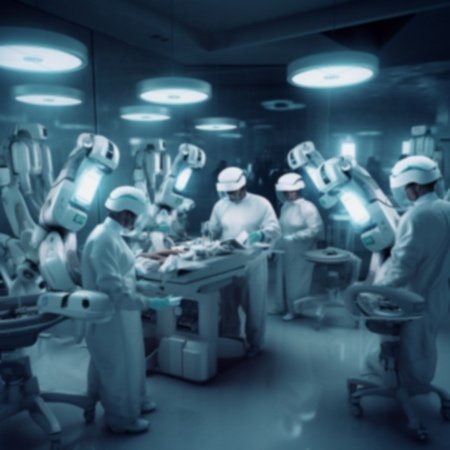The Autonomous Surgical Robot & Surgeon
The Autonomous Surgical Robot & Surgeon
Introducing IX Innovation's
Patent 11,389,248
Welcome to the future of surgical procedures, where precision, safety, and efficiency are take center stage, facilitated by the collaboration between a surgeon and artificial intelligence. Patent 11,389,248 presents a unique solution to the persistent problem of surgical errors and adverse events, which have remained unacceptably high despite traditional patient safety initiatives. It is a prized asset for medical device startups, mid-size companies, and large corporations alike, offering numerous benefits that make it key for shaping the future of robotic surgical systems leveraging artificial intelligence.

Introducing IX Innovation's Patent
11,464,650
Synchronized Placement of Surgical implant Hardware
Patent Claims
The patent proposes a robotic surgical system that is jointly controlled by an artificial intelligence (AI) and a surgeon. The AI is trained using data from previous surgeries and can indicate to the surgeon when it has been sufficiently trained to take over parts of a surgery. It can also prompt the surgeon when there is insufficient training data for the AI to continue. Alternatively, a supervising surgeon can manually take back control of the surgical robot from the AI. The system also facilitates remote surgeries, providing previously unavailable lifesaving treatments in remote locations. The autonomous capabilities of the robotic system can compensate for the potential loss of a network connection, allowing the surgical robot to continue an operation or manage the patient while a network connection is reestablished.
WHY IS THIS PATENT
VALUABLE?
As robotic surgery improves, this patent represents a significant breakthrough in the systems and methods for autonomous surgical robot evolution and handoff for manual operation
Improvement of Surgical Safety
The patent addresses the high rate of adverse events during surgical procedures. It proposes a system where a surgical robot is controlled jointly by an artificial intelligence (AI) and a surgeon, reducing the risk of errors and complications.
Efficiency and Precision
The AI is trained using data from previous surgeries, allowing it to perform parts of a surgery with greater precision than a human surgeon. This can lead to more accurate surgeries, particularly in minute locations.
Reduction of Surgeon Fatigue
The system can take over parts of a surgery, reducing stress and fatigue on the surgeon. This can lead to fewer mistakes during the operation and improve patient outcomes.
Reduced Need for Personnel
The system can perform parts of a surgery autonomously or with minimal supervision, reducing the need for additional personnel in the operating room. This can help address shortages of qualified surgeons and medical personnel.
Remote Surgery Capabilities
The system can facilitate remote surgeries, providing lifesaving treatments in remote locations. It can also continue an operation or manage the patient if a network connection is lost, enabling more reliable remote surgery.
Cost Reduction
By automating routine tasks and reducing the need for additional personnel, the system can make medical procedures safer and less costly for patients.
Enhanced Training
The AI can provide indications to the surgeon when it has been sufficiently trained to take over parts of a surgery, and can prompt the surgeon when there is insufficient training data for the AI to continue. This can help improve the training process for surgeons.
Integration with Existing Systems
The patent is compatible with best practice guidelines for performing surgery in an operating room, making it easier to integrate into existing systems.
Why you should invest in IXI Patent
11,389,248?
Investing in Patent 11,389,248 supports the future of human surgery particularly in the collaboration of robotics, artificial intelligence, and surgeons
-
For startups, this patent offers a unique selling proposition that can differentiate their products in a competitive market. It provides an opportunity to pioneer a new era of surgical procedures, where AI and human expertise work hand in hand to improve patient outcomes.
-
Mid-size companies can leverage this technology to scale their operations and improve their product offerings. The patented technology can help these companies to streamline their surgical procedures, reduce costs, and improve patient safety.
-
Large corporations can integrate this technology into their existing product lines to enhance their market position. The patent offers a way to innovate within the established framework of surgical procedures, providing a significant competitive advantage.

